This week, we find out about survival in extreme environments. We find out how free divers descend hundreds of feet underwater without air, how life thrives beneath the ice in Antarctica, how fighter pilots combat G-forces to avoid blackouts, and how the body copes with exercising at the top of Everest. Also, discover the benefit of breaks between bouts of exercise, how geckos hold the key to underwater post-it notes, and a gene that lets you chat whilst listening to the radio.
In this episode
Geckos "mussel in" on underwater adhesive scene
Researchers have successfully combined two of natures most powerful adhesive strategies to produce the underwater equivalent of a post-it note!
Writing in Nature, Phil Messersmith from Northwestern University in Illinois describes how he and his team have come up with "Gekel", which consists of an array of silicone nanorods designed to mimic a gecko's foot, coated in a polymer recipe based on the adhesive used by mussels to glue themselves onto rocks and jetties.
Geckos are the lizard equivalent of spidermen. They can run up vertical surfaces and even move across surfaces upside down. The secret to their surface-hugging success is an array of microscopic nano-hairs on their feet. These tiny hairs, each no more than one five thousandth of a millimetre across, are electrically attracted to the surface they are touching, giving the gecko sticking power. But unfortunately geckos come unstuck in the wet, which has thrown a spanner in the biomimetic works of researchers who are trying to copy the gecko's trick for use in robotics and to produce better adhesives. But this problem led Messersmith to wonder whether mussels might be the answer. These shellfish produce proteins containing large amounts of the unusual amino acid DOPA (di-hydroxy-phenylalanine), which sticks tightly to most surfaces. So he produced an artificial version of the mussel glue and smeared it onto the artificial gecko foot. The result was an adhesive that can be attached, detached and reattached at least a thousand times without losing its stickiness, in and out of the water.
Now the team are looking at ways to scale up production of the new material, and they hope one immediate application will be in producing better wound-dressings, and plasters that won't float off in the pool!

03:21 - Do you need two Ears?
Do you need two Ears?
Do you find it hard to listen to two things at once? Maybe you're watching the TV and someone is trying to talk to you?
If so, then it seems you might be able to blame it on your genes.
That's according to new research that has just come out from a team of scientists from the National Institute on Deafness and Other Communication Disorders (NIDCD) in Maryland in the US.
Robert Morell and his colleagues carried out a study of 194 pairs of identical and non-identical twins to investigate whether the ability - or lack of ability - to listen to more than one thing at once, can be inherited.
The twins were given a series of tests to establish how well they could pick out one sound from one ear when they were being played a different sound in the other ear - so for example they were asked to identify the two sounds "ma" and "ka" that were being played one in each ear.
The team compared the scores of the non-identical twins - who share on average 50% of their genes - with the scores of the identical twins - who have exactly the same genes.
And it turned out that the ability to listen to more than one thing at once is certainly heritable - by about the same amount as Type I dibetes.
Other than being a good excuse if you get nagged for not listening to your wife while listening to the TV, it's hoped that these studies will also lead to better understanding of hearing disorders, in which people with normal hearing have trouble understanding words.
Sweet taste of success as researchers uncover gene that causes diabetes
Researchers have found a new gene that is strongly linked to the development of type 1 or "juvenile" diabetes.
Hakon Hakonarson, from the Children's Hospital of Philadelphia, used the power of SNPs - single nucleotide polymorphisms to track down the gene in children with the disease. SNPs are genetic markers that are inherited like any other piece of DNA, but because they have all been documented they can be used as convenient flags to highlight the presence of certain genetic sequences.
In this study the researchers recruited 1000 diabetes patients, 1200 parents of patients with diabetes and 1000 healthy children and studied the pattern of SNPs in all of them. This led to them identifying all of the previously discovered genetic triggers of diabetes as well as one new one, a gene called KIAA0350. It's carried in at least 40% of children with diabetes and although the team don't yet know exactly how it triggers the disease, it is strongly expressed by immune cells. This is signficant because type 1 diabetes occurs when the immune system turns upon and destroys a patient's own insulin-producing cells in their pancreas. But now the team have identified the gene, which was previously unknown, they can now being to ask important questions about how it provokes the condition, and whether it can be deactivated to protect carriers from subsequently developing the disease.
Bad News for British Seabirds.
That's according to the RSPB who have announced this week that colonies of seabirds, like puffins, kittiwakes and Manx shearwaters are not doing very well at all in their normal breeding grounds on the islands in northern Scotland. The last few years have seen really bad breeding seasons for many seabirds because it seems that the birds are literally starving and climate change could be to blame.
Seabirds usually feed on sand eels which in turn feed on the tiny microscopic marine algae called Phytoplankton. Over the last few years scientists have measured changes in the distribution of phytoplankton in the oceans which is thought to be a consequence of increasing sea temperatures. And the changes in the plankton are thought to be one reason for declines in populations of sand eels. And with fewer sand eels to eat, the seabirds are finding it increasingly difficult to find enough food for their young.
There was some hope that a different type of fish, called pipefish, could provide a new source of food for the seabirds, because for some reason they are doing very well and are currently living in great abundance around the shores of the UK. But unfortunately, the problem is that the pipefish - long thin relatives of seahorses - are not very easy to eat, with tough outer skeletons that seabirds can't get their beaks around. In fact the birds are trying to use them for whatever they can, even building nests out of them.
We will need to wait until the end of the summer to see the full fate of the British seabirds this year, but it seems that we are sadly hearing news that animals are finding it difficult to deal with climate change.
Have a break. Have a kitkat...well maybe not, but you will lose more weight
Japanese researchers have found that when it comes to exercise and weight loss, the perceived wisdom of quantity over quality might be wrong.
Tokyo University's Kuzushige Goto recruited six healthy men and studied their metabolic response to exercise on a cycling machine. The volunteers performed either a solid 60 minute workout, two thirty minute workouts with a 20 minute rest between the two, or 60 minutes resting in an armchair as a control. Blood samples were taken regularly throughout the experiments.
Surprisingly the men showed signs of burning of more fat during the interrupted exercise regime than during the sustained 60 minute workout.
Their blood showed significantly higher levels of free fatty acids and glycerol, which are markers of fat breakdown, compared with the longer workout. Present advice given to patients trying to lose weight be exercising is to extend the length of workouts to ensure adequate fat depletion. However, this study shows that this method may not be the most effective way to enhance fat metabolism, as splitting up a long bout of exercise with a rest period burns more fat than a continuous bout of exercise.

Why should you pre-heat the oven?
The main reason is that when cooking from a recipe, or following the instructions on pre-packaged food, there is a recommended time that the food needs to be cooked at the right temperature in order to be cooked properly and safe to eat. If the oven hasn't reached that temperature yet, you may be cooking it for the wrong length of time.
There are lots of chemical reactions occurring when you cook food, and different reactions occur at different rates depending on the temperature. This means that while your food is in the oven below the right temperature, you will not get the right balance of reactions occurring while you cook. The reactions which give food it's distinctive 'cooked' flavours and colours are Maillard reactions (between sugars and amino acids) and caramelisation (the oxidation of sugars). These reactions work better at higher temperatures, and so your food will look and taste better if you wait for the oven to heat up.
Also, while the food is pre-heating it will be losing water by evaporation, meaning that the cooked meal is likely to be drier and less succulent.
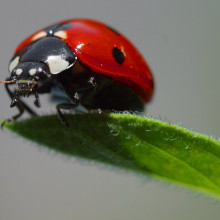
18:54 - Science Update - Extreme Family Survival
Science Update - Extreme Family Survival
with Bob Hirshon and Chelsea Wald, AAAS
Bob - This week for The Naked Scientists we're going to talk about the lengths to which plants and insects will go to help their kin survive. I'm going to talk about some family-oriented plants called sea rockets, but first Chelsea tells us about a surprising ability of a common garden pest.
Chelsea - Did you ever secretly mix two chemicals in chemistry class to get an explosion of noxious fumes? Well, biologist Glen Powell of Imperial College London discovered that cabbage aphids do just that in their bodies. One of the chemicals comes from the cabbage plant itself: the aphids eat it and store it in their blood. The other chemical the aphids make and store in their muscles. If a predator ladybird (ladybug) takes a bite out of one of the aphids, the two chemicals meet and blast the ladybird with poison.
Glen Powell (Imperial College London): The type of damage that needs to be done in order to mix the blood and the muscle tissue to actually produce this reaction is fairly extreme, so probably the aphid dies in the process.
Chelsea - But Powell says it dies a hero's death, protecting its colony.
Bob - Thanks, Chelsea. Some plants not only recognize their family members: they even treat them more generously than they treat strangers. Plant ecologists Susan Dudley and Amanda File, of McMaster University in Canada, discovered this among plants called sea rockets. Normally, when unrelated sea rockets are potted together, they grow longer roots than they would on their own - to better compete for limited water and nutrients. But Dudley says things were different when they potted the plants with their siblings.
Susan Dudley (McMaster University, Canada): The siblings basically didn't respond to sharing the pots. So they didn't make this competitive response, while the strangers did.
Bob - Since some other plants might share this behavior, Dudley says gardeners may get better results by planting crops near family.
Chelsea - Thanks, Bob. We'll be back next time with more amazing science from the country of family values. Until then, I'm Chelsea Wald...
Bob - ...and I'm Bob Hirshon, for AAAS, The Science Society. Back to you, Naked Scientists...
20:56 - Diving Deep
Diving Deep
with Mark Harris, British Freediving Association.
Chris - And now to the science of free diving, this is diving as deep as you can but without any air supply. Here to tell us a little more about it is Mark Harris, from the British Freediving Association. Hello Mark.
Mark - Hi Chris.
Chris - So, just in a nutshell, what is the point of freediving?
Mark - It's really to dive down as deeply as you can on one breath of air. There are several disciplines in freediving but the one that most people are familiar with is diving deep by holding your breath.
Chris - You don't have any sort of weights or anything to help you get as deep as you need to go?
Mark - You do, actually, yes. Because you need to wear a wetsuit you need to off set that with a little bit of weight, but it tends to be a little bit less than scuba divers wear, so it's typically around two or three kilos or so.
Chris - So would you swim down, or would you just rely on the weight of the water and the weight you're carrying to drag you down.
Mark - You can do either. Because there are different disciplines in freediving you can either fin down with a pair of fins or you can go on to what's called a sled, which has weights on it, very heavy weights, and that would pull you down. If you do that variety of freediving, which is called no limits, that will actually take you a lot deeper because you don't need to use any, or as much, oxygen to get down there.
Chris - How deep do people who do this tend to go?
Mark - Well up until recently I think the deepest depth was about 150-160...
Chris - Is that metres?
Mark - Metres, yes that's right. I think a lot of people are familiar with Tanya Streeter, a well-known freediver who was hitting those sorts of depths. More recently, there was an Austrian guy, Herbert Nische, and he's just gone down to 211m on a weighted sled.
Chris - Crikey, this is hundreds of feet, how are people doing that?
Mark - It's a combination of things really; partly, freedivers physiology has adapted, people have found new techniques and that sort of thing. And also, the technology that people are using now, for instance Herbert Nische uses a special little bottle that he breathes into part of the way down to help with his equalisation. He doesn't actually use any scuba tanks or anything like that, this is air from his lungs, but he re-uses it in a plastic bottle.
Chris - So how do you prepare yourself if you're going to do one of these dives? How do you get ready to do it?
Mark - What you really need to do is two or three successive breath holds to condition your body. So what a lot of us do is we tend to have a rope in the ocean or lake, depending on where we're doing it, and we just pull ourselves down through about 10, 15 or 20 metres or so. We do a breath hold there for a couple of minutes and then pull ourselves up again. If you do that over a successive period of time it helps to condition your body ready for doing the much deeper dive later.
Chris - And then what do you do, because whenever I dive, to do a few lengths in the pool or something, I find an irresistible urge to want to breathe. Presumably, something is building up in your body. Do you hyperventilate before you do it to get rid of waste gasses like carbon dioxide?
Mark - Absolutely not, no. Certainly not trained freedivers. I think people who don't know much about it have tried that and certain people who go spearing fish do that, but it's just about the worst thing you can do. When you hyperventilate you're blowing off carbon dioxide, and when you do this it causes vasoconstriction of the veins and arteries in the brain. So it's effectively shutting off blood supply to the brain. It also means that when you've blown off that carbon dioxide you've tricked your body into thinking that you don't need to breathe. So you get into an area where you've used up the oxygen in your blood stream, and you get this double whammy effect, which results in something called shallow water blackout. So it's a very dangerous thing really, and it's one of the main things that we try to suggest for people to avoid.
Chris - So a slap on the wrists to me for even suggesting that you might do that.
Mark - Well, not really. I think it's good that you did actually, to alert people to that sort of thing.
Chris - So when you're actually diving, Mark, what's actually happening to your body as you descend to hundreds of feet as these professionals are?
Mark - Well I guess the main thing that you're aware of is the fact that all your air spaces are rapidly decreasing. Because the pressure is building up, the volume of air in your sinuses, your lungs and your inner ear is all decreasing. You feel that as you're going down. Once you hit round about 20m or so, you can stop finning, because you just start sinking, at the same time you have to equalise your air spaces. And then once you get down to past about 40 m you then start having issues with your lungs, because your lungs are squashed right down, they're really compressed to quite a small area.
Chris - Sounds scary. So how do you know when you've reached your limit and it's time to start ascending. That must be critical for survival, isn't it?
Mark - It is, but for everyone it happens to be a different thing. For some people, like myself in fact, it tends to be strength of the legs. I know at a certain depth that I'm going to have problems finning against the negative buoyancy to get me back to the surface. For other people it will be just not being able to compensate the ears against the pressure, that can be one thing. And for other people it's just a mental thing, they just start not panicking but getting a little bit uncomfortable, not feeling happy with the situation. It can be any one of those things really.
Chris - And just to finish off Mark, how long can you hold your breath for these days?
Mark - Well I was in the swimming pool last night, doing some training, and I did a 6 minute 18 second hold, but I have done better than that.
Chris - Good grief, so do you practice in the bath? Do you lay in the bath, underwater kind of holding your nose?
Mark - This is another one of those slapped wrist moments. With freediving, whatever you do, whether it's holding your breath or actually swimming underwater, you never ever do it alone. So doing it in the bath first of all would be very uncomfortable, but second of all I would have to have someone with me to monitor me.
Chris - But as they say, baths are always fun if there's more than one person in there at once.
Mark - Well, that's true, yes, there is that to think about, and there's the rubber duck to play with. You could do it in the bath; it's a little bit tricky. For me, personally, if I'm training at home I tend to do it out of the water and just do dry breath holds.
29:01 - Surviving Antarctica
Surviving Antarctica
with David Thomas, University of Wales, Bangor.
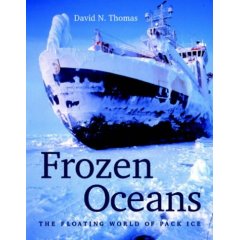 Chris - As someone who has been to both the poles for his research, you have survived and come back. It's a horrible place thought, isn't it? How cold is it at the poles?
Chris - As someone who has been to both the poles for his research, you have survived and come back. It's a horrible place thought, isn't it? How cold is it at the poles?
David - Well it must be said that we go mostly in the summer, so actually quite often we will be working on the ice in T-shirts because if the sun is at a high angle it's just like being in Switzerland and being warmed by the Sun. But at the South Pole, the coldest temperature has been -80 degrees centigrade, so about the temperature of liquid nitrogen really.
Helen - That's really quite cold!
Chris - Yes, it's pretty chilly! How does life survive there, or is it just a barren wilderness with nothing?
David - No, there's plenty of bacteria that are living in the uppermost snow on the south pole, and most of these organisms they kind of go down into a diapause or a hibernation, they just go into resting stages until conditions get better. Myself, I study microscopic algae that get caught up into ice in frozen sea water, and when temperatures get really cold they just switch down their metabolism to a basal rate and then wait for the conditions to get better. That's a general principal, same for polar bears really, as well.
Chris - So if you look in the ice, it's not the sterile thing that we think it is, there's quite a lot of life hidden in there.
David - There's a lot of viruses, a lot of bacteria... it's teeming with life. Even very ancient ice that is hundreds of thousands of years old, has bacteria that have been brought back to life when this ice has been retrieved from these deep ice cores that people are taking in Greenland and the Antarctic.
Chris - It's intriguing to me that we put into our deep freeze at home food to make sure that it wont go off. It suppresses the activity of life which degrades food, that's at about -20 degrees. You're playing around in those temperatures and you've got things that you say are thriving. So how do they survive and flourish in those temperatures?
David - So we've actually got bacteria that are moving around at -20, this is the same temperature as your freezer in the sea ice. One of the things they do is the produce a lot of slime; they produce a lot of mucous. They protect their cells within [the slime] and sit in this gel-like body that buffers them against a lot of the temperature and also saline stresses that they may come into contact with.
Chris - Is it true that things like Unilever, big companies like them, have borrowed from biology and solved the problem of how to make smooth ice cream by nicking the chemistry that some of these microbes have invented for themselves?
David - There's a whole new industry of bio-prospecting in the poles, and people are looking for enzymes that work at particularly cold temperatures, substances that make, as you say, ice-cream smooth at cold temperatures. There's a whole group of industries that are out there that are looking to the poles for solving many of these kinds of problems.
Chris - One of the things you said was that on a hot day it can be like you're on the ski slopes of Switzerland and you have to be careful not to get burned, because there's lots of UV. So 2 questions come out of that: One; how do these organisms not actually get zapped by the UV and B; if there's a massive ozone hole over Antarctica now, is that compromising these organisms?
David - A lot of the organisms that live down there are able to react very quickly to changing light conditions. They're able to produce a whole string of pigments and also special amino acids that they are able to produce their own sunscreens, if you like. In turn, these microalgae and bacteria that produce these substances are eaten by things like the crustacea, the krill, as I gather was mentioned last week. They take on these sunscreen compounds via their diet, basically.
Chris - Ah, so one borrows from the other.
David - Exactly.
Chris - That's neat, so can we nick that and use it to make better suncreams for us? Especially if this ozone hole gets any bigger?
David - I don't think we need to. But one of the things is that when the ozone hole was first identified, a lot of biologists got a lot of research money out of this as everyone thought that this is going to be catastrophic to biology in polar regions. I think the last 10-15 years of research has shown that it probably isn't as catastrophic as first thought, the biology is really able to cope pretty remarkably, actually.
Chris - So that's the hole in the ozone layer, but what about the other big problem which is said to be effecting Antarctica, which is global warming, and melting. There's conflicting stories, some people are saying some bits of Antarctica are getting warmer, some bits are getting colder, what's the real story and how does it all fit together.
David - I think what's interesting here is that we do have regions of the Antarctic, the Antarctic peninsula, which is probably the area of the globe that is heating up the most, or at the fastest rate. In general, it's thought that the Antarctic isn't really suffering as such from global climate change. Where things are really happening is up in the Arctic, where we know that in 2050 (so within our lifetimes hopefully) there will be no sea ice in the summer. There will be always sea ice in the winter, but there will be no sea ice in the summer in the 2050s.
Chris - What's melting it?
David - Just increase in temperature. Temperatures are increasing dramatically over the past 30 years.
Chris - Is that the sea temperature, so it's melting from beneath, or is that the air temperature, so it's melting from above?
David - It's both, actually, so the thought of an ice-free Arctic, it's great for the shipping companies, who are going to be able to use the North West passages and the North East passages. But for things like the polar bears that are getting so much press at the moment, and also for the ecosystem. There's a whole ecosystem that's based on having a frozen ocean for a whole year up in the Arctic. Of course, we don't know what the consequences will be.
Chris - Don't polar bears do something clever when they walk across ice, because they can in some way intuitively test where it will take them?
David - They can, they kind of splay their legs out and crawl, so they're spreading the load of their body, but it doesn't really matter if they fall through, to be honest, as polar bears are fantastic swimmers anyway.
Chris - Now, you said that Antarctica isn't really suffering that much, but what about the fact that the ice sheet Larsen B and then other ones which we've seen previously, they've actually been of the order of thousands of square kilometres of ice - is that not significant?
David - It's certainly significant, but these kinds of ice-shelf break-ups have been happening throughout geological time, so they're part of a natural process. An ice shelf comes to an end and breaks off. It is true though, Larsen B is on the Antarctic peninsula and it's very likely that that's associated with the warming of the peninsula area.
Chris - Do you think then that it's too late from this global warming point of view? Are we going to see unequivocal losses that we can't remedy, in terms of the ecosystems and environments, or do you think that if we do start acting now we can turn things around?
| David's book, Frozen Oceans, is available online through Amazon: |
 |
David - No, I don't think we can start turning things around, and cyclical changes like this have been well known in geological time. In the past there was tropical plants growing up in the Arctic region, so this is nothing new. What we've done, I think in the last couple of hundred years, is we've increased the rate of change of something that was happening quite naturally. My guess is we can't turn things around, we're not going to stop this pack ice going in the Arctic. But it must be said that with many of these changes, we've seen big cycles in climate change in the past.
Chris - I suppose it's good news, as my sort of final point, for fishermen, because up in the northern hemisphere, where they've been restricted by quotas and declining fish stocks, some of them have taken to catching icebergs instead. I did read one story where there's quite a big market for the water from icebergs.
David - There has been lots of ideas throughout time of taking icebergs and dragging them to Arabian countries as a source of fresh water, and this is an idea that doesn't ever seem to go away.
Chris - There must be quite a lot of water locked up in an iceberg, there must be millions of tonnes.
David - There's massive amounts of water, especially when you add up the amount of water that's in an ice shelf or an ice cap. It's just staggering amounts.
37:19 - Coping with G-Forces
Coping with G-Forces
with Major Todd Dart, United States Air Force
So we've heard about going down to incredible depths, now we're going to find out about going thousands of meters up in the air, with Major Todd Dart, Aerospace Physiologist with the United States Air Force.
Chris - It sounds pretty trivial, you just get in an aeroplane and fly it. But what sorts of forces, G - forces will people who are flying very fat planes actually be experiencing?
Todd - Well, it all depends. Fighter aircraft for example, pull up to upwards of 9 Gs in the aircraft. That's what we call 9 positive Gs or at the vector going from the head down to the feet.
Chris - In real terms, what does that mean, Todd?
Todd - In real terms it means you have to be able to get that blood, keep that blood, up to your brain, so you don't lose consciousness eventually if you don't have some sort of way of keeping the blood from pooling down. We have a lot of mechanisms that we have to train the pilots to do, fighter pilots specifically, and also technology that we use to keep the blood flowing to the brain.
Chris - So are you saying that you tell people not to do movements that would subject them to 9 Gs, because to put that in perspective if your head is feeling 9 Gs the weight of your head is effectively nine times bigger than normal, isn't it?
Todd - Yes it is. Unfortunately, in the military environment sometimes you have to pull 9 Gs, so we have to come up with ways to counter that. We do that by providing training on a human centrifuge, and there are two the air force uses for that. What we do is we put them on there and we train them how to use the equipment, we put them in G suits - which only gives you about a 1 G increase or so in G tolerance. The main thing we do is we train them in how to perform what's called an anti-G straining manoeuvre.
Chris - So when you say G Suit, this suit puts pressure on the body, squeezing say, on the legs and this stops blood from pooling in the legs. It that the way it's done?
Todd - Yes, exactly. Medical doctors will be familiar with the mass suit, which was developed to prevent shock; this was developed from the G-suit, used in the military. A typical G-suit has an abdominal bladder and bladders in the legs. Some cover the whole leg, some only cover parts of the leg. It's squeezes the leg as soon as you hit about 2 Gs. It helps get that blood up to your brain.
Chris - So that's the blood going away from the brain, but what about if you do the manoeuvre the other way, does this force blood into your brain, and can that be dangerous?
Todd - Yes it can, in fact we can't tolerate very much of that, only about -3 Gs, its called negative G. That's about as much as we can handle before we start getting what's called red-out; you're getting so much blood into the brain that it ends up engorging the eyes, you get some rupturing and it can cause headaches. It's very uncomfortable and pilots don't like to do those...
Chris - Not surprisingly! So how can you compensate for these effects? What can you say to people, what do people actually do to avoid feeling these effects.
Todd - Well, to avoid negative Gs pilots will simply roll the aircraft and pull positive Gs, most of the aircraft are not designed to pull negative Gs because it's uncomfortable. We are evolutionarily adapted to handle 1G pretty well, so we have physiological and anatomical adaptations to help get that blood up to the brain. Valves in the veins, we also have cardio-vascular reflexes. We rely on those as well to help give us that tolerance we need to get up there, they help us with positive Gs. We get pilots in the G-suit, train them in the aircraft and train them how to do the straining manoeuvre. They will start their strain and before they even get a chance to go up much higher in Gs, they're starting to strain to get that blood up so they can last. Typically, they'll pull Gs maybe 10-15 seconds.
Helen - Do you find that there are some people who just can never be trained to go up that far and experience these extreme conditions. Are some people better than others?
Todd - Some are, there is a lot of individual variation. Most people start to lose consciousness if they're relaxed between 5-7 Gs. Normally, the taller you are the less able you are to handle the Gs and that's because it depends a lot on the heart to brain distance. The greater the distance, the more distance you have to pump blood up to the brain and that puts more strain so you have to maintain a higher blood pressure to do that. So people who tend to do a little bit better on average tend to be people who are short.
Chris - So when you put people on your human centrifuge, can you tell who's going to be okay, and who's going to have problems?
Todd - We have a general idea, it's not 100% of course. I've seen people who are very tall, thin marathon runners who are fighter pilots who do great.
Chris - So Tom Cruise really would be a good fighter pilot because he's nice and short like me?
Todd - He might be a better fighter pilot because those who tend to be shorter tend to do better.
Chris - So what about women, because at the moment the military tends to select in favour of men. Is there an anatomical reason for that or is it just because historically, it's always been blokes who've gone to war and the women haven't so much until recently?
Todd - Well, at the US Air Force we have female fighter pilots as well, and we found out many years ago in fact that there really is little difference between man and women in terms of G tolerance. Women do just as well as men do on average.
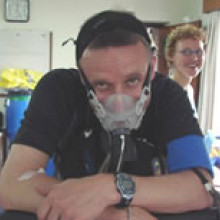
43:54 - Xtreme Everest
Xtreme Everest
with Richard Turner, BBC Manchester
Well now from very high up in the air in an aeroplane to very high up in the air whilst standing on land! Richard turner is a BBC journalist who volunteered to be part of University College London's Xtreme Everest project.
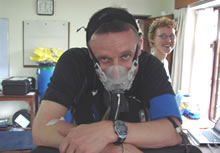 Chris - So then Richard, why were you up Everest?
Chris - So then Richard, why were you up Everest?
Richard - I heard about a project called "Xtreme Everest" which was organised by some very clever doctors at University College London (UCL). They were looking for volunteers to walk up to Everest base camp so that they could do a wide scientific study on the effects of low oxygen, or hypoxia, on the human body.
Chris - What was it like, actually at Everest base camp, because we hear this trotted out; "its Everest base camp". But what actually is Everest base camp and what's it like there.
Richard - Everest base camp is very much like a very icy quarry, it's a very barren place and there's not much up there, apart from lots of tents and climbers and doctors in this case.
Chris - So what sorts of conditions were you experiencing while you were there?
Richard - Well the conditions were really about how we responded to the altitude, and therefore the rarefied atmosphere that you get at altitude. The oxygen levels at that height are about half of what they are at sea level. In fact, we were studying ourselves and testing ourselves on the walk, or trek, up there, and you would watch your blood oxygen levels, or the oxygen saturation in your blood fall down to levels which would be quite critical if you were at sea level. By the time you've acclimatised you can cope with those levels. We were down to about 65% where as normally at sea level you would be at 98%.
Chris - How high is Everest base camp above sea level?
Richard - Everest base camp is 5300m, its on the edge of what people call the 'Death Zone' up there, which sounds quite dramatic. But the issue is that above that height, and up to the height of Everest, you are at the limit of the human body's ability to cope with those low oxygen conditions. In fact, the summit of Everest, coincidentally, is the exact limit of human ability, it just happens to be that, and there the oxygen is about a third of what it is down here.
Chris - How did you cope with walking around with oxygen levels so low when you first got there? Did you notice?
Richard - Yes, you do, there are various things that you start feeling. First of all the physical fatigue; any form of exercise or movement suddenly becomes very hard. We have had time on the way up to acclimatise to those conditions so you can function, but it's the little things like any form of exercise, and little things like your wounds don't heal very well, your nails get very brittle, and you're very tired. You don't sleep well, that's the thing. When you sleep normally, your oxygen levels fall because your body is saying 'I don't need all that oxygen, I'm at rest'. If that happens at altitude, where there is even less oxygen your body doesn't get much oxygen, so you don't sleep very well at all.
 Chris - And what did the medical doctors find with the blood samples and things they took from you? Have they actually published their findings yet or are they still ongoing with the work up on it.
Chris - And what did the medical doctors find with the blood samples and things they took from you? Have they actually published their findings yet or are they still ongoing with the work up on it.
Richard - That data is still being analysed, and it's going to be some time before we get the full results. But they're interested in finding, or applying the results of this to intensive care medicine and in other conditions where oxygen is an issue. For instance what happened was, as intensive care doctors, as they were at UCL, they would see two patients come in with similar traumas into intensive care, and one would live and one would die. Today, people haven't been able to work out why. Being mountaineers for a hobby, many of them realised that the symptoms that the patients were experiencing were very similar to mountaineers at high altitude; the low oxygen and swelling on the brain and the lungs. They realised that if they could study people at high altitude they may be able to find new treatments to help people who come in with very serious traumas, who are critically ill, and also patients who have a number of disorders like emphysema or cystic fibrosis, and premature babies.
Chris - Richard, thank you for sharing your experience on Everest with us, just finally, any regrets?
Richard - No, not at all, it was a fantastic experience and it was great to be apart of something which hopefully will benefit a lot of people.
Richard's expedition was sponsored by hosting provider
UKFast, who also support the Naked Scientists.
Electric toothbrshes and wobbly TVs?
Electric toothbrushes contain an electric motor - which is made to turn by the electricity from the battery inducing a magnetic field. The motor contains a commutator and some brushes, which are usually made of carbon. As the motor rotates, it intermittently connects with the brushes, and this leads to an intermittent current which then makes a spark. This effectively means that your electric toothbrush generates radio waves across a wide range of frequencies, which will affect anything nearby that is sensitive to radio waves, such as your TV or your radio.
Another reason for what looks like a wobbly picture when watching TV and using an electric toothbrush is the vibrations caused to your skull and eyes. This may only effect a TV because it's scanned at a certain frequency (25Hz), so everything else would not appear wobbly!
How do giraffes control their blod pressure with such long necks?
All animals control their blood pressure to an extent, but giraffes have a special adaptation consisting of a series of valves in their neck to control the intense pressure that would build up when they put their head down to drink. This anatomical adaptation controls the blood pressure otherwise they would have a massive surge of blood into their brain and experience 'red-out'.

Why do rainbows dissappear if you stare at them?
This is an example of adaptation. Everything in the nervous system is adaptable, which means that when you smell something or feel something, get into a hot bath for example, you stop noticing the sensation after a while. Your eyes are exactly the same. If you stare at something for a while without moving your eyes around to refresh the image, the retina degrades the image and it becomes blurry. That's true of anything you look at, and as rainbows are slightly less distinct, it's more difficult for the eye to get a fix on it, and so they probably degrade more easily.
- Previous Naked Science Q&A Show
- Next Fuels of the Future
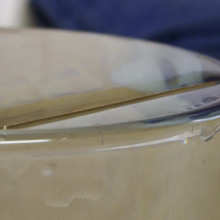










Comments
Add a comment